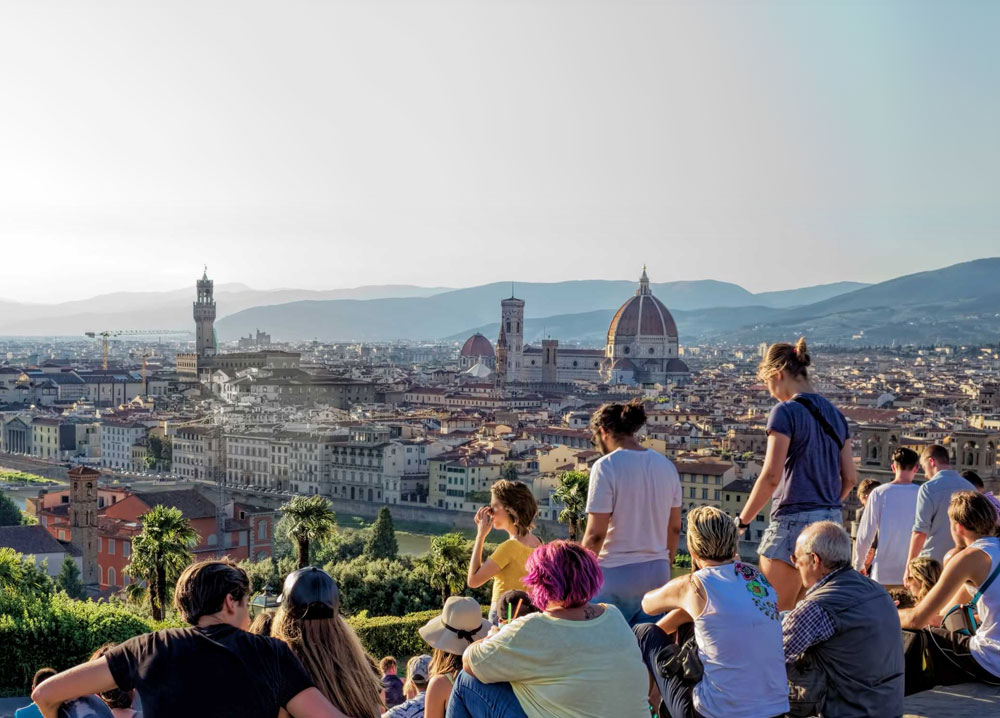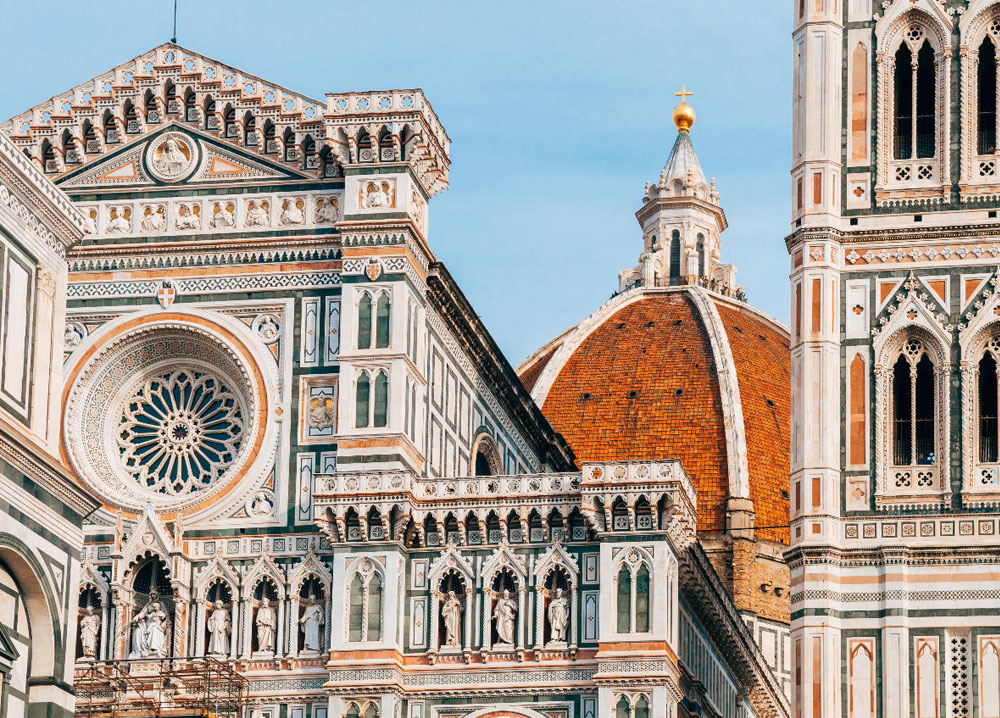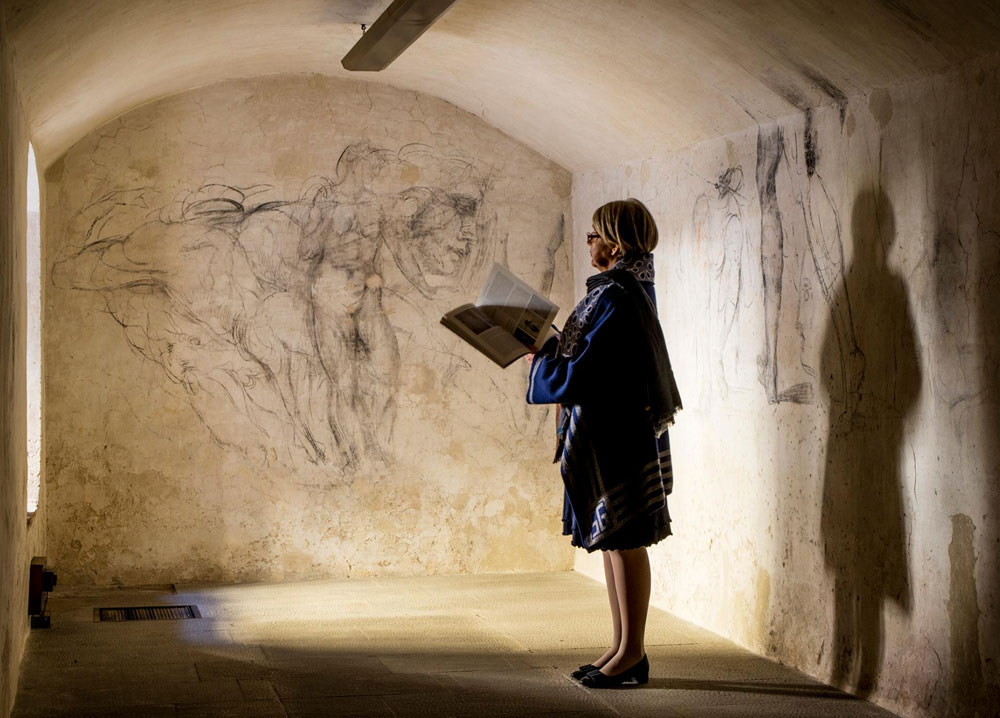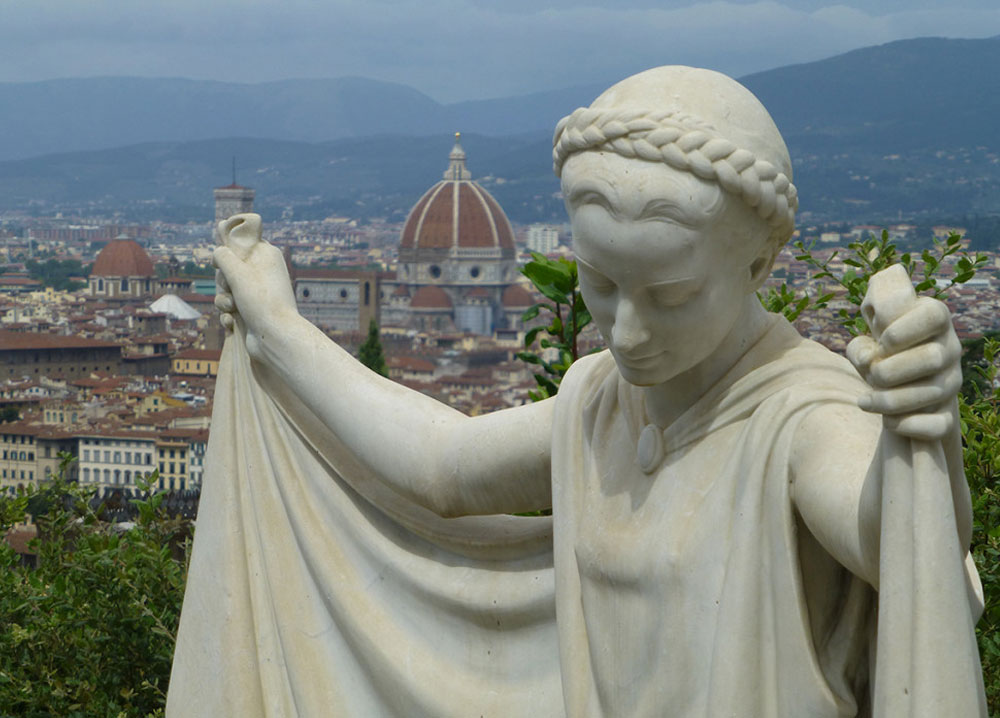Explore Florence in Three Days

Florence was a centre of medieval European trade and finance and one of the wealthiest cities of that era. It is considered by many academics the birthplace of the Renaissance, and has been called the Athens of the Middle Ages. Florence is the treasure chest of your European trip, and there is so much to explore.
To help you plan your trip to Florence, we’ve put together the must-see destinations, especially if you are only stopping by for three short days.
Explore Florence's Duomo
Florence’s historical center is small and thus perfect for exploring on foot! This way you’ll get the chance to walk in the footsteps of some of the most accomplished artists and scientists the world has ever known.
Make your way to piazza Duomo where you’ll be treated to incredible traces of the Renaissance, like the Cathedral of Santa Maria del Fiore.
This is such an interesting Cathedral to explore. It was built on the site of the 7th century church of Santa Reparata, the remains of which can be seen in the crypt. The building Cathedral was dedicated to Mary, the mother of Jesus, who has been given various titles by different religious groups. Nowadays it is more widely referred to as Duomo di Firenze (Cathedral of Florence), or simply The Duomo.
Work on the cathedral started around 1296, and while the structure itself was built in 1367, the original construction left the famous dome – known as the cupola – incomplete. Work on the dome didn’t start until around 1418, meaning the cathedral’s structure that we see today wasn’t completed until the mid-1430s.
Today, the Florence Cathedral can be surpassed in size only by the Basilica of St. Peter in Vatican City, St. Paul’s Cathedral in London, the Cathedral of Seville and the Cathedral of Milan. However in its time, this cathedral was the largest in Europe, with a capacity for 30,000 people. Inside the Duomo, your eyes are inevitably drawn upwards to that soaring painted dome and lovely stained-glass windows by such masters as Donatello. Visit the crypt, where the tomb of Brunelleschi (the cathedral’s brilliant architect) lies, or to the top of the enormous dome itself for stupendous views over Florence. Take your time exploring the Cathedral and the nearby sights – this will take a good part of your day.
A little note of warning, as a religious site you are required to wear appropriate, respectful clothing. Shorts and skirts need to be to the knee and no hats, sunglasses or sleeveless tops are allowed inside.
After a big day of walking, learning and admiring, you are bound to feel tired and hungry. There are many dining options nearby. We like Lo Scudo Wine & Grill for their mussels and clams in sailor style, tomatoes topped with shaved parmigiano and cured beef bresaola, fresh potato dumpling with tomato sauce and fresh diced mozzarella and of course a scoop of delicious Italian ice cream from Gelateria Edoardo nearby.
Walk The Boboli Gardens
The Boboli Gardens is a historical park of the city that was first opened to the public in 1766.
Originally, for almost four centuries it was the garden of the residence of the great dukes of Tuscany, and for a short period of the kings of Italy, eventually bought out and re-designed by the Medici, it represents one of the first and most important examples of the Italian Garden, which later served as inspiration for many European courts. The Gardens are undoubtedly a fundamental stage for those who want to learn about the fascinating history of the city of Florence.
The House of Medici was an Italian banking family and political dynasty that first began to gather prominence under Cosimo de’ Medici in the Republic of Florence during the first half of the 15th century.
The large green area of the Boboli Gardens is a real open-air museum with statues of various styles and periods, ancient and Renaissance that are distributed throughout the garden. It also has large fountains and caves, among them the splendid Buontalenti grotto built by the artist, architect and sculptor Bernardo Buontalenti between 1536 and 1608.
There is a great little place nearby called Jessy’s Bar, where you can rest your feet and grab a bite and a glass of prosecco to fuel your exploration.
Medici Hall of Maps, Michelangelo's Hidden Drawings and The Cemetery
Uncover over 50 exquisite hand-painted Renaissance maps, alongside 237 portraits of luminaries of the Renaissance, decorate a Medici storage room.
Inspired largely by the illustrated Renaissance edition of Ptolomy’s Geographica as well as new innovations in cartography by Mercator and Orelius, Ignazio Danti painted the first 31 maps between 1563-1575, followed by another 23 maps created by Stefano Bonsignori, cosmographer to Cosimo I’s son, Francesco I de’ Medici. This is a truly interesting sight.
In 1530, to escape the wrath of the Pope, Michelangelo holed up in a tiny secret room under the Medici Chapel of the Basilica di San Lorenzo.
The artist had been working on the lavish tomb when all hell broke loose in Florence, and he was forced into hiding. With nothing but time and a little charcoal on his hands, he covered the bare walls with some prisoner graffiti. You can now uncover his work during a very uncertain and terrifying time for Michelangelo in Florence, including his drawings of himself, of Christ, and even, some experts believe, sketched reproductions of images from the ceiling of the Sistine Chapel, which he had completed in 1512.
A cemetery isn’t always on many travelers’ bucket list but there are enough unique and very interesting cemeteries in Europe to grant them a special place on our list of things to see in Florence.
This graveyard is filled with beautiful funerary art and boasts breathtaking views of Florence. Tucked behind the 1,000-year-old church of San Miniato al Monte is the Cimitero delle Porte Sante (Sacred Doors Cemetery). The burial ground was founded in the 1800s for both common citizens and notable Florence residents. The cemetery serves as an open-air museum filled with sculptures and beautiful architecture. The private chapels and tombs are built in a medley of styles, ranging from neo-classic to Art Nouveau and Art Deco. Many of them are largely inspired by Florence’s medieval and Renaissance churches.








